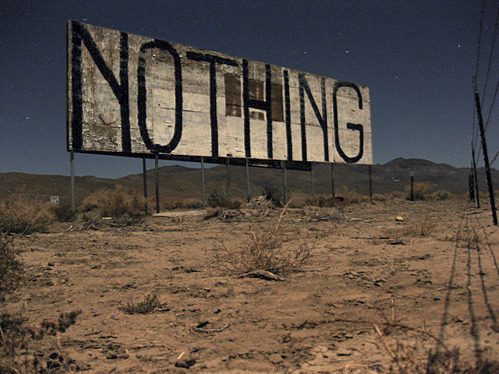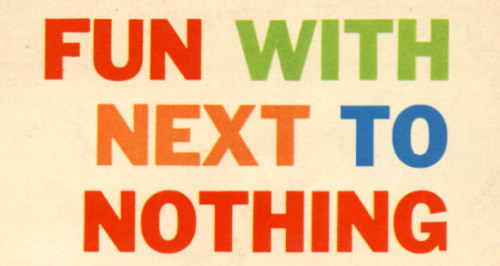Having thus excluded conversation and desisted from study, he had neither business nor amusement. His ideas, therefore, being neither renovated by discourse nor increased by reading, wore gradually away, till at last his anger congealed into madness.

Tuesday, March 31, 2020
They Aren’t Just Whistling Dixie
Enough with the “Party of Lincoln” nonsense. The Republican Party is now the Party of Trump, and that means the party of nativism, racism, religious bigotry and white nationalism.
They no longer campaign for office on platforms of small government as a matter of economic principle. They no longer advocate free trade. Rather, they beat the drums of xenophobia, speak of the nation being “overrun” by swarms of dark-skinned others, and warn of the existential threat to western culture itself posed by migrants of color and Muslims.
And their congressional representatives stand by while their leader — the President — tells four congresswomen of color to go back where they came from if they don’t like America as it currently exists, under his administration.
Rather than calling out this racism for what it is, Republican leaders were more upset about Democrats labeling Trump racist than for Trump being racist. And polls indicate the president’s approval rating went up among Republicans after he did it. Both are definitive indications that the party has now decided to go all-in as a white nationalist cult.
The GOP has finally and fully metamorphosed into the very thing it initially opposed. They are the new second coming of the Confederacy, resurrected from its ignominious defeat over 150 years ago.
It’s ironic because Republicans never tire of reminding everyone that the Democrats were the party of southern confederates. It’s a way to position themselves as the party that has always opposed racism and white supremacy, while the Dems were the party of slavery, segregation, and lynching.
Of course, the only way anyone can make this argument with a straight face, and use it to score modern political points, is to ignore some significant contemporary developments.
First, it is conservatives, and indeed GOP lawmakers in southern states in particular, who are today the most vociferous defenders of the symbols of the Confederacy.
They are the ones who support the continued flying of the confederate battle flag.
They are the ones who deny it’s a symbol of racism, even as progressives and Democrats call for its removal and are clear about the racism that motivated the government whose army flew it.
They are the ones who fight to keep statues standing that glorify confederate war generals as valiant soldiers for a noble cause, while most progressives wish to remove them and consign them to museums. After all, the left sees these worship altars for what they are: tributes to traitors and racists who fought for a government whose admitted purpose was to maintain slavery, and whose states joined it for precisely that reason.
Historian Kevin Kruse has noted the unmistakable trend on his Twitter feed:
They are the ones — like Donald Trump himself — who insisted that some among the white supremacists in Charlottesville for the “Unite the Right” rally were “good people,” because they were only there to defend southern heritage as represented by those statues. Democrats didn’t say that. Liberals and leftists surely didn’t.
The idea that the Democrats of today are the party of slavery, segregation and lynching, and that liberals, in particular, are the inheritors of the confederate mantle would be hilarious were it not so completely untethered from reality.
People say these things as if we don’t have Google.
Or eyes, with which to see this:

Or this:

They say these things as if one is supposed to believe that in this bunch…

…one will find Obama and Hillary Clinton supporters.
They say these things as if we will forget the accolades for the Confederacy offered not by any liberal publication, but by none other than Breitbart in 2015, during the tenure of Steve Bannon:
They say these things as if they expect us to believe that the kind of folks who make (and purchase) bumper stickers like this…
…might include among them Democrats and particularly liberal ones at that.
They say these things as if the kind of people who make and purchase racist, puerile shit like this, and put it on their bumpers just above their truck nuts…
…are flaming leftists, rather than the Trump-supporting, uneducated, bigoted, and irredeemable know-nothings they actually are.
In other words, to claim the Democrats or Republicans of the 1860s are equivalent to their namesakes today is intellectually lazy and nonsensical. The parties have changed quite a bit even in the past sixty years to say nothing of the past century-and-a-half.
In the 1950s, for instance, the GOP platform included praise for labor unions and the expansion of the minimum wage, support for the UN, expansion of Social Security, more government intervention in job and housing markets, and even an Equal Rights Amendment. All of these are positions they would run from today and have abandoned.
And at that same time, the Democrats — in their southern iteration — were militantly committed to the maintenance of segregation: a position they abandoned with the presidency of Lyndon Johnson, while it was the Republican candidate, Barry Goldwater, who courted (and captured) the southern segregationist vote.
The simple fact is — and please take notes Candace Owens — things change, and just because an institution’s name remains the same doesn’t mean it’s the same institution.
For instance, Major League Baseball’s Dodgers once played in Brooklyn. Now they play in Los Angeles. Both Dodgers, but ya’ know, different.
See how that works?
The Republicans long ago decided to court racism, initially with dog whistles, just obtuse enough to afford plausible deniability to those engaged in the practice. Don’t take my word for it: consider the words of the late Lee Atwater, one of the nation’s most prominent Republican political consultants, who explained the game that he and others like him had been playing for years.
In a 1981 interview, he noted that by the 1960s it was no longer acceptable to use blatant racial slurs to gain votes; as such, conservatives had to use more abstract language to get the point across.
Listen:
The only difference now is that rather than dog-whistling, the Trumpist GOP has opted for bullhorns. They are broadcasting their hatreds for all to hear and leaving no doubt as to what and who they are.
Anyone from this point forward who remains in their camp, who votes for their candidates, or who supports their continued existence as a political force is an adversary of everything decent about this nation.
They have declared war on the principles of justice and equity and pluralism.
They cannot be reasoned with.
They cannot be made part of a broad political coalition.
They can only be defeated: entirely and without the least bit of mercy.
We should have salted the earth after Appomattox. But I guess it’s better late than never.
* * *
I’m an antiracism educator/author. I Facebook & tweet @timjacobwise, podcast at Speak Out With Tim Wise & post bonus content at patreon.com/speakoutwithtimwise
Currently...
I've pretty much given up on Poland. It's a perfect storm of reactionary Catholicism, fascism, misogyny, racism, exceptionalism, nationalism, all the "-ism"s...
I guess it stands out more to me because of how precipitous the slide has been from "solidarity" to whatever this is.
Also, "un-soviet bloc" is a term I'm using... Having gone from "anti-soviet" to "former-soviet" to "un-soviet", much as we use "un-dead".
I guess it stands out more to me because of how precipitous the slide has been from "solidarity" to whatever this is.
Also, "un-soviet bloc" is a term I'm using... Having gone from "anti-soviet" to "former-soviet" to "un-soviet", much as we use "un-dead".
Apropo of something...
...a couple of days after baby-momma (monster) picked me up at the Harrisburg train station and drove me to our new home in Waynesboro via all the back roads, purposefully to freak me out about where I've moved to, I saw a woman in a house-dress and slippers, with rollers in her hair actually VACUUMING HER FRONT YARD WITH AN ANTIQUE HOOVER!
This is when I was sure I had made a very big mistake.
This is when I was sure I had made a very big mistake.
Monday, March 30, 2020
Currently...
Sixty singers showed up in early March for a 2.5-hour choir practice. Now, three weeks later, “45 have been diagnosed with COVID-19 or ill with the symptoms, at least three have been hospitalized, and two are dead.”
– Los Angeles Times
– Los Angeles Times
Currently...
Vice is asking:
Where Is Everyone Getting All of This Sourdough Starter All of a Sudden?
A:
Out of thin air! (seriously, duh)
Where Is Everyone Getting All of This Sourdough Starter All of a Sudden?
A:
Out of thin air! (seriously, duh)
Feel free to insert bias de jour
“Never believe that anti-Semites are completely unaware of the absurdity of their replies. They know that their remarks are frivolous, open to challenge. But they are amusing themselves, for it is their adversary who is obliged to use words responsibly, since he believes in words. The anti-Semites have the right to play. They even like to play with discourse for, by giving ridiculous reasons, they discredit the seriousness of their interlocutors. They delight in acting in bad faith, since they seek not to persuade by sound argument but to intimidate and disconcert. If you press them too closely, they will abruptly fall silent, loftily indicating by some phrase that the time for argument is past.”
- Jean Paul-Sartre
- Jean Paul-Sartre
Sunday, March 29, 2020
BTW,
A (washable, sanitizable!) common bandana, folded into a triangle with a coffee filter between the layers is the new thing.
Currently...
re: Others reactions to my commentary, deciding that I'm being "culturally superior",
Is it superior?
I'm absolutely very, very different in tastes and actions from my fellow humans, to the point that I more identify as alien. I'm fine with that.
I'm still flummoxed by others not being fine with that.
Just different, in very real and meaningful ways.
If my skin were green, I think my thoughts would be received more on-par with their intentions, rather than in contrast to one's own.
However, If I am in fact "culturally superior", then yay!
--------------------
Is it superior?
I'm absolutely very, very different in tastes and actions from my fellow humans, to the point that I more identify as alien. I'm fine with that.
I'm still flummoxed by others not being fine with that.
Just different, in very real and meaningful ways.
If my skin were green, I think my thoughts would be received more on-par with their intentions, rather than in contrast to one's own.
However, If I am in fact "culturally superior", then yay!
--------------------
(understanding that my insistence on making everything a godsdamned serious philosophical discussion is fucking annoying...)
What if, upon my mention of something like "1930's Weimar Berlin", a person chose to visit that milieu for a while.
Then, upon reflection, judged that activity to be a better use of their time than whatever the current cultural phenomenon was.
Would they then be in an elevated state of cultural superiority?
If so, then I am gratified.
Bring back the walkable, accessable, decentralized, barter economy, general store!
"General stores used to be in every little town and village. They would carry a broad range of items, sometimes in a very small space. People from the surrounding area frequented the store for general goods. A general store was the main location for the community’s residents to shop.
They sold staple food items like milk and bread, and some household goods, such as hardware and electrical supplies. Some still exist, but there are fewer and fewer of them.
General stores were established in remote populated areas during the 18th and 19th centuries. Mobility was somewhat limited and a single store could serve the entire community. Store owners often adjusted their merchandise to the preferences of their communities.
In the early days of general stores, goods were often traded for local produce and other items. As the population grew, the need for goods from other areas grew. This led to the creation of networks of merchants working together. "

They sold staple food items like milk and bread, and some household goods, such as hardware and electrical supplies. Some still exist, but there are fewer and fewer of them.
General stores were established in remote populated areas during the 18th and 19th centuries. Mobility was somewhat limited and a single store could serve the entire community. Store owners often adjusted their merchandise to the preferences of their communities.
In the early days of general stores, goods were often traded for local produce and other items. As the population grew, the need for goods from other areas grew. This led to the creation of networks of merchants working together. "

Saturday, March 28, 2020
Currently...
"The CEOs self-isolating in their mansions can do nothing to save the situation. All their supposed creativity and intelligence is useless without the labour force that their wealth was built on.
The actions of our political leaders confirm this. The only creative and intelligent thing they’ve thought of to do to stave off the prospect of a deep recession is to keep as many workers as possible at their posts – recklessly sacrificing our health to protect the profits of their corporate masters."
Currently...
I just figured out why "The Witcher" series is so relentlessly hetero and cis normative, and other-shaming....
Polish author.
😅
Polish author.
😅
On this day...
On this day, March 28 of the year 845, a huge Viking fleet attacked Paris. They were led by chieftain Ragnar (Reginherus in Frankish sources), who is traditionally identified as the legendary Ragnar Lothbrok.
Ragnar's fleet, consisting of 120 Viking ships carrying thousands of men, reached Paris after having defeated the French army trying to stop them along the river Seine. After plundering and occupying Paris, the Vikings withdrew when they had been paid a huge ransom of 2570 kilograms (5665 lbs) of silver and gold from Charles the Bald, the French king.
The attack is believed to be an act of revenge since Ragnar had been given land and the favor of the king 4 years earlier. The king had betrayed him and Ragnar had lost the land.

Ragnar's fleet, consisting of 120 Viking ships carrying thousands of men, reached Paris after having defeated the French army trying to stop them along the river Seine. After plundering and occupying Paris, the Vikings withdrew when they had been paid a huge ransom of 2570 kilograms (5665 lbs) of silver and gold from Charles the Bald, the French king.
The attack is believed to be an act of revenge since Ragnar had been given land and the favor of the king 4 years earlier. The king had betrayed him and Ragnar had lost the land.

"Fan service"
https://www.queerty.com/michael-chabon-afraid-didnt-make-star-trek-picard-obviously-gay-enough-really-20200328
Alma Mater
Whenever I see these videos, I always say to myself "Why didn't you point the camera *there or at *that?!"
Currently...
Ooh, yes. Laundry. Good call.
Also, gonna make shit tacos today. (that's my term for American ground beef and packet taco filling)
Wondering if an auto parts store is open, and if I could find there the right glass tube fuses to fix my old Harman Kardon receiver. (I really hate my modern Sony fancy-pants one)
...or maybe I'll just sit here all day and throw more gems down the empty well that is my blog, as I don't post or share on Facebook anymore.
Also, gonna make shit tacos today. (that's my term for American ground beef and packet taco filling)
Wondering if an auto parts store is open, and if I could find there the right glass tube fuses to fix my old Harman Kardon receiver. (I really hate my modern Sony fancy-pants one)
...or maybe I'll just sit here all day and throw more gems down the empty well that is my blog, as I don't post or share on Facebook anymore.
Currently...
I found bread! (no flour anywhere, so store-bought, which is backsliding for me.)
Big sammich!
1930's Berliner Weimar era music and writings rabbit-hole!
Did my taxes!
Throwing everything down the empty well that is my blog and giving Facebook nothing!
Drove around fast and bumpy in my van 'cause I've got the engine purring and it's fun!
Lost the last flint for my Zippo, so now my workshop floor is spotless! (found it)
Thanks for asking!
Big sammich!
1930's Berliner Weimar era music and writings rabbit-hole!
Did my taxes!
Throwing everything down the empty well that is my blog and giving Facebook nothing!
Drove around fast and bumpy in my van 'cause I've got the engine purring and it's fun!
Lost the last flint for my Zippo, so now my workshop floor is spotless! (found it)
Thanks for asking!
Best dad is comrade dad
"You can have rather profound ideas or at least come up with better ways of expressing ones by explaining things to your children. Example; we were talking about money, long term(retirement) savings, and enjoying life while you are still young and trying to maintain a balance. She asked me why it was so hard to find a balance. I just replied "because money as we know it now isn't real or natural, so it has no place in nature. All natural things move towards achieving harmony. Money does not. It moves towards those who will take it. Any life dependent on money in any way, directly or indirectly, will never find true harmony."
It's nothing new as far as how I see things, but I have never said it or even thought of it like that consciously. It just came out. I think sometimes when explaining important topics to your children, parental instincts enable your intuition to flow freer and break down the wall between what we know and what we think. Very useful evolutionary byproduct."
-Chase Zarefoss
It's nothing new as far as how I see things, but I have never said it or even thought of it like that consciously. It just came out. I think sometimes when explaining important topics to your children, parental instincts enable your intuition to flow freer and break down the wall between what we know and what we think. Very useful evolutionary byproduct."
-Chase Zarefoss
PASSING stranger! You do not know how longingly I look upon you,
You must be he I was seeking, or she I was seeking,
(It comes to me, as of a dream,)
I have somewhere surely lived a life of joy with you,
All is recalled as we flit by each other, fluid, affectionate, chaste, matured,
You grew up with me,
were a boy with me, or a girl with me,
I ate with you, and slept with you
— your body has become not yours only,
nor left my body mine only,
You give me the pleasure of your eyes, face, flesh, as we pass
— you take of my beard, breast, hands, in return,
I am not to speak to you
— I am to think of you when I sit alone, or wake a night alone,
I am to wait — I do not doubt I am to meet you again,
I am to see to it that I do not lose you.
-Walt Whitman, Calamus Poem Twenty-two, Leaves of Grass
You must be he I was seeking, or she I was seeking,
(It comes to me, as of a dream,)
I have somewhere surely lived a life of joy with you,
All is recalled as we flit by each other, fluid, affectionate, chaste, matured,
You grew up with me,
were a boy with me, or a girl with me,
I ate with you, and slept with you
— your body has become not yours only,
nor left my body mine only,
You give me the pleasure of your eyes, face, flesh, as we pass
— you take of my beard, breast, hands, in return,
I am not to speak to you
— I am to think of you when I sit alone, or wake a night alone,
I am to wait — I do not doubt I am to meet you again,
I am to see to it that I do not lose you.
-Walt Whitman, Calamus Poem Twenty-two, Leaves of Grass
Friday, March 27, 2020
This is genius, @AnimanStudios! Everyone must follow. (Six feet away.) pic.twitter.com/tY3ad4Rell— Boy Culture Blog (@mattrett) March 27, 2020
They need to publish a "Little Blue Book" of wisdom from comrade Admiral Picard.
"Fear is an incompetent teacher." —Admiral Picard
MENTAL HEALTH WELLNESS TIPS FOR QUARANTINE
1. Stick to a routine. Go to sleep and wake up at a reasonable time, write a schedule that is varied and includes time for work as well as self-care.
2. Dress for the social life you want, not the social life you have. Get showered and dressed in comfortable clothes, wash your face, brush your teeth. Take the time to do a bath or a facial. Put on some bright colors. It is amazing how our dress can impact our mood.
3. Get out at least once a day, for at least thirty minutes. If you are concerned of contact, try first thing in the morning, or later in the evening, and try less traveled streets and avenues. If you are high risk or living with those who are high risk, open the windows and blast the fan. It is amazing how much fresh air can do for spirits.
4. Find some time to move each day, again daily for at least thirty minutes. If you don’t feel comfortable going outside, there are many YouTube videos that offer free movement classes, and if all else fails, turn on the music and have a dance party!
5. Reach out to others, you guessed it, at least once daily for thirty minutes. Try to do FaceTime, Skype, phone calls, texting—connect with other people to seek and provide support. Don’t forget to do this for your children as well. Set up virtual playdates with friends daily via FaceTime, Facebook Messenger Kids, Zoom, etc—your kids miss their friends, too!
6. Stay hydrated and eat well. This one may seem obvious, but stress and eating often don’t mix well, and we find ourselves over-indulging, forgetting to eat, and avoiding food. Drink plenty of water, eat some good and nutritious foods, and challenge yourself to learn how to cook something new!
7. Develop a self-care toolkit. This can look different for everyone. A lot of successful self-care strategies involve a sensory component (seven senses: touch, taste, sight, hearing, smell, vestibular (movement) and proprioceptive (comforting pressure). An idea for each: a soft blanket or stuffed animal, a hot chocolate, photos of vacations, comforting music, lavender or eucalyptus oil, a small swing or rocking chair, a weighted blanket. A journal, an inspirational book, or a mandala coloring book is wonderful, bubbles to blow or blowing watercolor on paper through a straw are visually appealing as well as work on controlled breath. Mint gum, Listerine strips, ginger ale, frozen Starburst, ice packs, and cold are also good for anxiety regulation. For children, it is great to help them create a self-regulation comfort box (often a shoe-box or bin they can decorate) that they can use on the ready for first-aid when overwhelmed.
8. Spend extra time playing with children. Children will rarely communicate how they are feeling, but will often make a bid for attention and communication through play. Don’t be surprised to see therapeutic themes of illness, doctor visits, and isolation play through. Understand that play is cathartic and helpful for children—it is how they process their world and problem solve, and there’s a lot they are seeing and experiencing in the now.
9. Give everyone the benefit of the doubt, and a wide berth. A lot of cooped up time can bring out the worst in everyone. Each person will have moments when they will not be at their best. It is important to move with grace through blowups, to not show up to every argument you are invited to, and to not hold grudges and continue disagreements. Everyone is doing the best they can to make it through this.
10. Everyone find their own retreat space. Space is at a premium, particularly with city living. It is important that people think through their own separate space for work and for relaxation. For children, help them identify a place where they can go to retreat when stressed. You can make this place cozy by using blankets, pillows, cushions, scarves, beanbags, tents, and “forts”. It is good to know that even when we are on top of each other, we have our own special place to go to be alone.
11. Expect behavioral issues in children, and respond gently. We are all struggling with disruption in routine, none more than children, who rely on routines constructed by others to make them feel safe and to know what comes next. Expect increased anxiety, worries and fears, nightmares, difficulty separating or sleeping, testing limits, and meltdowns. Do not introduce major behavioral plans or consequences at this time—hold stable and focus on emotional connection.
12. Focus on safety and attachment. We are going to be living for a bit with the unprecedented demand of meeting all work deadlines, homeschooling children, running a sterile household, and making a whole lot of entertainment in confinement. We can get wrapped up in meeting expectations in all domains, but we must remember that these are scary and unpredictable times for children. Focus on strengthening the connection through time spent following their lead, through physical touch, through play, through therapeutic books, and via verbal reassurances that you will be there for them in this time.
13. Lower expectations and practice radical self-acceptance. This idea is connected with #12. We are doing too many things in this moment, under fear and stress. This does not make a formula for excellence. Instead, give yourself what psychologists call “radical self acceptance”: accepting everything about yourself, your current situation, and your life without question, blame, or pushback. You cannot fail at this—there is no roadmap, no precedent for this, and we are all truly doing the best we can in an impossible situation.
14. Limit social media and COVID conversation, especially around children. One can find tons of information on COVID-19 to consume, and it changes minute to minute. The information is often sensationalized, negatively skewed, and alarmist. Find a few trusted sources that you can check in with consistently, limit it to a few times a day, and set a time limit for yourself on how much you consume (again 30 minutes tops, 2-3 times daily). Keep news and alarming conversations out of earshot from children—they see and hear everything, and can become very frightened by what they hear.
15. Notice the good in the world, the helpers. There is a lot of scary, negative, and overwhelming information to take in regarding this pandemic. There are also a ton of stories of people sacrificing, donating, and supporting one another in miraculous ways. It is important to counter-balance the heavy information with the hopeful information.
16. Help others. Find ways, big and small, to give back to others. Support restaurants, offer to grocery shop, check in with elderly neighbors, write psychological wellness tips for others—helping others gives us a sense of agency when things seem out of control.
17. Find something you can control, and control the heck out of it. In moments of big uncertainty and overwhelm, control your little corner of the world. Organize your bookshelf, purge your closet, put together that furniture, group your toys. It helps to anchor and ground us when the bigger things are chaotic.
18. Find a long-term project to dive into. Now is the time to learn how to play the keyboard, put together a huge jigsaw puzzle, start a 15 hour game of Risk, paint a picture, read the Harry Potter series, binge watch an 8-season show, crochet a blanket, solve a Rubix cube, or develop a new town in Animal Crossing. Find something that will keep you busy, distracted, and engaged to take breaks from what is going on in the outside world.
19. Engage in repetitive movements and left-right movements. Research has shown that repetitive movement (knitting, coloring, painting, clay sculpting, jump roping etc) especially left-right movement (running, drumming, skating, hopping) can be effective at self-soothing and maintaining self-regulation in moments of distress.
20. Find an expressive art and go for it. Our emotional brain is very receptive to the creative arts, and it is a direct portal for release of feeling. Find something that is creative (sculpting, drawing, dancing, music, singing, playing) and give it your all. See how relieved you can feel. It is a very effective way of helping kids to emote and communicate as well!
21. Find lightness and humor in each day. There is a lot to be worried about, and with good reason. Counterbalance this heaviness with something funny each day: cat videos on YouTube, a stand-up show on Netflix, a funny movie—we all need a little comedic relief in our day, every day.
22. Reach out for help—your team is there for you. If you have a therapist or psychiatrist, they are available to you, even at a distance. Keep up your medications and your therapy sessions the best you can. If you are having difficulty coping, seek out help for the first time. There are mental health people on the ready to help you through this crisis. Your children’s teachers and related service providers will do anything within their power to help, especially for those parents tasked with the difficult task of being a whole treatment team to their child with special challenges. Seek support groups of fellow home-schoolers, parents, and neighbors to feel connected. There is help and support out there, any time of the day—although we are physically distant, we can always connect virtually.
23. “Chunk” your quarantine, take it moment by moment. We have no road map for this. We don’t know what this will look like in 1 day, 1 week, or 1 month from now. Often, when I work with patients who have anxiety around overwhelming issues, I suggest that they engage in a strategy called “chunking”—focusing on whatever bite-sized piece of a challenge that feels manageable. Whether that be 5 minutes, a day, or a week at a time—find what feels doable for you, and set a time stamp for how far ahead in the future you will let yourself worry. Take each chunk one at a time, and move through stress in pieces.
24. Remind yourself daily that this is temporary. It seems in the midst of this quarantine that it will never end. It is terrifying to think of the road stretching ahead of us. Please take time to remind yourself that although this is very scary and difficult, and will go on for an undetermined amount of time, it is a season of life and it will pass. We will return to feeing free, safe, busy, and connected in the days ahead.
25. Find the lesson. This whole crisis can seem sad, senseless, and at times, avoidable. When psychologists work with trauma, a key feature to helping someone work through said trauma is to help them find their agency, the potential positive outcomes they can effect, the meaning and construction that can come out of destruction. What can each of us learn here, in big and small ways, from this crisis? What needs to change in ourselves, our homes, our communities, our nation, and our world?
2. Dress for the social life you want, not the social life you have. Get showered and dressed in comfortable clothes, wash your face, brush your teeth. Take the time to do a bath or a facial. Put on some bright colors. It is amazing how our dress can impact our mood.
3. Get out at least once a day, for at least thirty minutes. If you are concerned of contact, try first thing in the morning, or later in the evening, and try less traveled streets and avenues. If you are high risk or living with those who are high risk, open the windows and blast the fan. It is amazing how much fresh air can do for spirits.
4. Find some time to move each day, again daily for at least thirty minutes. If you don’t feel comfortable going outside, there are many YouTube videos that offer free movement classes, and if all else fails, turn on the music and have a dance party!
5. Reach out to others, you guessed it, at least once daily for thirty minutes. Try to do FaceTime, Skype, phone calls, texting—connect with other people to seek and provide support. Don’t forget to do this for your children as well. Set up virtual playdates with friends daily via FaceTime, Facebook Messenger Kids, Zoom, etc—your kids miss their friends, too!
6. Stay hydrated and eat well. This one may seem obvious, but stress and eating often don’t mix well, and we find ourselves over-indulging, forgetting to eat, and avoiding food. Drink plenty of water, eat some good and nutritious foods, and challenge yourself to learn how to cook something new!
7. Develop a self-care toolkit. This can look different for everyone. A lot of successful self-care strategies involve a sensory component (seven senses: touch, taste, sight, hearing, smell, vestibular (movement) and proprioceptive (comforting pressure). An idea for each: a soft blanket or stuffed animal, a hot chocolate, photos of vacations, comforting music, lavender or eucalyptus oil, a small swing or rocking chair, a weighted blanket. A journal, an inspirational book, or a mandala coloring book is wonderful, bubbles to blow or blowing watercolor on paper through a straw are visually appealing as well as work on controlled breath. Mint gum, Listerine strips, ginger ale, frozen Starburst, ice packs, and cold are also good for anxiety regulation. For children, it is great to help them create a self-regulation comfort box (often a shoe-box or bin they can decorate) that they can use on the ready for first-aid when overwhelmed.
8. Spend extra time playing with children. Children will rarely communicate how they are feeling, but will often make a bid for attention and communication through play. Don’t be surprised to see therapeutic themes of illness, doctor visits, and isolation play through. Understand that play is cathartic and helpful for children—it is how they process their world and problem solve, and there’s a lot they are seeing and experiencing in the now.
9. Give everyone the benefit of the doubt, and a wide berth. A lot of cooped up time can bring out the worst in everyone. Each person will have moments when they will not be at their best. It is important to move with grace through blowups, to not show up to every argument you are invited to, and to not hold grudges and continue disagreements. Everyone is doing the best they can to make it through this.
10. Everyone find their own retreat space. Space is at a premium, particularly with city living. It is important that people think through their own separate space for work and for relaxation. For children, help them identify a place where they can go to retreat when stressed. You can make this place cozy by using blankets, pillows, cushions, scarves, beanbags, tents, and “forts”. It is good to know that even when we are on top of each other, we have our own special place to go to be alone.
11. Expect behavioral issues in children, and respond gently. We are all struggling with disruption in routine, none more than children, who rely on routines constructed by others to make them feel safe and to know what comes next. Expect increased anxiety, worries and fears, nightmares, difficulty separating or sleeping, testing limits, and meltdowns. Do not introduce major behavioral plans or consequences at this time—hold stable and focus on emotional connection.
12. Focus on safety and attachment. We are going to be living for a bit with the unprecedented demand of meeting all work deadlines, homeschooling children, running a sterile household, and making a whole lot of entertainment in confinement. We can get wrapped up in meeting expectations in all domains, but we must remember that these are scary and unpredictable times for children. Focus on strengthening the connection through time spent following their lead, through physical touch, through play, through therapeutic books, and via verbal reassurances that you will be there for them in this time.
13. Lower expectations and practice radical self-acceptance. This idea is connected with #12. We are doing too many things in this moment, under fear and stress. This does not make a formula for excellence. Instead, give yourself what psychologists call “radical self acceptance”: accepting everything about yourself, your current situation, and your life without question, blame, or pushback. You cannot fail at this—there is no roadmap, no precedent for this, and we are all truly doing the best we can in an impossible situation.
14. Limit social media and COVID conversation, especially around children. One can find tons of information on COVID-19 to consume, and it changes minute to minute. The information is often sensationalized, negatively skewed, and alarmist. Find a few trusted sources that you can check in with consistently, limit it to a few times a day, and set a time limit for yourself on how much you consume (again 30 minutes tops, 2-3 times daily). Keep news and alarming conversations out of earshot from children—they see and hear everything, and can become very frightened by what they hear.
15. Notice the good in the world, the helpers. There is a lot of scary, negative, and overwhelming information to take in regarding this pandemic. There are also a ton of stories of people sacrificing, donating, and supporting one another in miraculous ways. It is important to counter-balance the heavy information with the hopeful information.
16. Help others. Find ways, big and small, to give back to others. Support restaurants, offer to grocery shop, check in with elderly neighbors, write psychological wellness tips for others—helping others gives us a sense of agency when things seem out of control.
17. Find something you can control, and control the heck out of it. In moments of big uncertainty and overwhelm, control your little corner of the world. Organize your bookshelf, purge your closet, put together that furniture, group your toys. It helps to anchor and ground us when the bigger things are chaotic.
18. Find a long-term project to dive into. Now is the time to learn how to play the keyboard, put together a huge jigsaw puzzle, start a 15 hour game of Risk, paint a picture, read the Harry Potter series, binge watch an 8-season show, crochet a blanket, solve a Rubix cube, or develop a new town in Animal Crossing. Find something that will keep you busy, distracted, and engaged to take breaks from what is going on in the outside world.
19. Engage in repetitive movements and left-right movements. Research has shown that repetitive movement (knitting, coloring, painting, clay sculpting, jump roping etc) especially left-right movement (running, drumming, skating, hopping) can be effective at self-soothing and maintaining self-regulation in moments of distress.
20. Find an expressive art and go for it. Our emotional brain is very receptive to the creative arts, and it is a direct portal for release of feeling. Find something that is creative (sculpting, drawing, dancing, music, singing, playing) and give it your all. See how relieved you can feel. It is a very effective way of helping kids to emote and communicate as well!
21. Find lightness and humor in each day. There is a lot to be worried about, and with good reason. Counterbalance this heaviness with something funny each day: cat videos on YouTube, a stand-up show on Netflix, a funny movie—we all need a little comedic relief in our day, every day.
22. Reach out for help—your team is there for you. If you have a therapist or psychiatrist, they are available to you, even at a distance. Keep up your medications and your therapy sessions the best you can. If you are having difficulty coping, seek out help for the first time. There are mental health people on the ready to help you through this crisis. Your children’s teachers and related service providers will do anything within their power to help, especially for those parents tasked with the difficult task of being a whole treatment team to their child with special challenges. Seek support groups of fellow home-schoolers, parents, and neighbors to feel connected. There is help and support out there, any time of the day—although we are physically distant, we can always connect virtually.
23. “Chunk” your quarantine, take it moment by moment. We have no road map for this. We don’t know what this will look like in 1 day, 1 week, or 1 month from now. Often, when I work with patients who have anxiety around overwhelming issues, I suggest that they engage in a strategy called “chunking”—focusing on whatever bite-sized piece of a challenge that feels manageable. Whether that be 5 minutes, a day, or a week at a time—find what feels doable for you, and set a time stamp for how far ahead in the future you will let yourself worry. Take each chunk one at a time, and move through stress in pieces.
24. Remind yourself daily that this is temporary. It seems in the midst of this quarantine that it will never end. It is terrifying to think of the road stretching ahead of us. Please take time to remind yourself that although this is very scary and difficult, and will go on for an undetermined amount of time, it is a season of life and it will pass. We will return to feeing free, safe, busy, and connected in the days ahead.
25. Find the lesson. This whole crisis can seem sad, senseless, and at times, avoidable. When psychologists work with trauma, a key feature to helping someone work through said trauma is to help them find their agency, the potential positive outcomes they can effect, the meaning and construction that can come out of destruction. What can each of us learn here, in big and small ways, from this crisis? What needs to change in ourselves, our homes, our communities, our nation, and our world?
Thursday, March 26, 2020
The Trump campaign just released a cease and desist letter demanding that TV stations immediately pull this @prioritiesUSA ad. So obv share it everywhere! pic.twitter.com/T75mxE0rcJ— Amy Siskind 🏳️🌈 (@Amy_Siskind) March 25, 2020
Need to know
– One sign of the virus: loss of sense of smell and taste.
– The virus isn’t a living organism but a protein molecule. It is not killed, but decays on its own. The disintegration time depends on the temperature, humidity and type of material where it lies.
– The virus is very fragile; the only thing that protects it is a thin outer layer of fat. That is why any soap or detergent is the best remedy, because the foam CUTS the FAT (that is why you have to rub so much: for 20 seconds or more, to make a lot of foam). By dissolving the fat layer, the protein molecule disperses and breaks down on its own.
– HEAT melts fat; this is why it is so good to use water above 77 degrees Fahrenheit for washing hands, clothes and everything. In addition, hot water makes more foam and that makes it even more useful.
– Alcohol or any mixture with alcohol over 65% DISSOLVES ANY FAT, especially the external lipid layer of the virus.
– NEVER shake used or unused clothing, sheets or cloth. The virus disintegrates only between 3 hours (fabric and porous), 4 hours (copper, because it is naturally antiseptic; and wood, because it removes all the moisture and does not let it peel off and disintegrates), 24 hours (cardboard), 42 hours (metal) and 72 hours (plastic). But if you shake it or use a feather duster, the virus molecules float in the air for up to 3 hours, and can lodge in your nose.
– The virus molecules remain very stable in external cold, or artificial as air conditioners in houses and cars. They also need moisture to stay stable, and especially darkness. Therefore, dehumidified, dry, warm and bright environments will degrade it faster.
– NO SPIRITS, NOR VODKA, serve. The strongest vodka is 40% alcohol, and you need 65%.
– LISTERINE IF IT SERVES! It is 65% alcohol.
– The more confined the space, the more concentration of the virus there can be. The more open or naturally ventilated, the less.
– Above all: wash your hands before and after touching mucosa, food, locks, knobs, switches, remote control, cell phone, watches, computers, desks, TV, etc. And when using the bathroom.
– Keep your NAILS SHORT so that the virus does not hide there. If you have a nail brush, use it.
– The virus isn’t a living organism but a protein molecule. It is not killed, but decays on its own. The disintegration time depends on the temperature, humidity and type of material where it lies.
– The virus is very fragile; the only thing that protects it is a thin outer layer of fat. That is why any soap or detergent is the best remedy, because the foam CUTS the FAT (that is why you have to rub so much: for 20 seconds or more, to make a lot of foam). By dissolving the fat layer, the protein molecule disperses and breaks down on its own.
– HEAT melts fat; this is why it is so good to use water above 77 degrees Fahrenheit for washing hands, clothes and everything. In addition, hot water makes more foam and that makes it even more useful.
– Alcohol or any mixture with alcohol over 65% DISSOLVES ANY FAT, especially the external lipid layer of the virus.
– NEVER shake used or unused clothing, sheets or cloth. The virus disintegrates only between 3 hours (fabric and porous), 4 hours (copper, because it is naturally antiseptic; and wood, because it removes all the moisture and does not let it peel off and disintegrates), 24 hours (cardboard), 42 hours (metal) and 72 hours (plastic). But if you shake it or use a feather duster, the virus molecules float in the air for up to 3 hours, and can lodge in your nose.
– The virus molecules remain very stable in external cold, or artificial as air conditioners in houses and cars. They also need moisture to stay stable, and especially darkness. Therefore, dehumidified, dry, warm and bright environments will degrade it faster.
– NO SPIRITS, NOR VODKA, serve. The strongest vodka is 40% alcohol, and you need 65%.
– LISTERINE IF IT SERVES! It is 65% alcohol.
– The more confined the space, the more concentration of the virus there can be. The more open or naturally ventilated, the less.
– Above all: wash your hands before and after touching mucosa, food, locks, knobs, switches, remote control, cell phone, watches, computers, desks, TV, etc. And when using the bathroom.
– Keep your NAILS SHORT so that the virus does not hide there. If you have a nail brush, use it.
Currently...
“I’m standing on the edge of some crazy cliff. What I have to do, I have to catch everybody if they start to go over the cliff — I mean if they’re running and they don’t look where they’re going I have to come out from somewhere and catch them. That’s all I’d do all day. I’d just be the catcher in the rye and all.”
-Holden Caulfield
-Holden Caulfield
Currently...
“Winning? Is that what you think it’s about? I’m not trying to win. I’m not doing this because I want to beat someone or because I hate someone or because I want to blame someone. It’s not because it’s fun. God knows it’s not because it’s easy. It’s not even because it works because it hardly ever does. I do what I do because it’s right! Because it’s decent! And above all it’s kind…it’s just that. Just kind.
If I run away today, good people will die. If I stand and fight some of them might live. Maybe not many, maybe not for long. Hey, you know, maybe there’s no point in any of this at all but it’s the best I can do. So I’m gonna do it. And I will stand here doing it until it kills me. You’re going to die too someday. How will that be? Have you thought about it? What would you die for? Who I am is where I stand. And where I stand is where I fall. Stand with me..”
-The Doctor
If I run away today, good people will die. If I stand and fight some of them might live. Maybe not many, maybe not for long. Hey, you know, maybe there’s no point in any of this at all but it’s the best I can do. So I’m gonna do it. And I will stand here doing it until it kills me. You’re going to die too someday. How will that be? Have you thought about it? What would you die for? Who I am is where I stand. And where I stand is where I fall. Stand with me..”
-The Doctor
Nul

Overunder & Yale Wolf

JANE HILTON

geoffrey holsclaw

INSA

stoppingoffplace.blogspot.com

ruby anemic

ANTHONY BURRILL

OLIVIASTEELE.COM

DAVID SHRIGLEY

WHENTOSAYNOTHING.COM
Subscribe to:
Comments (Atom)








































